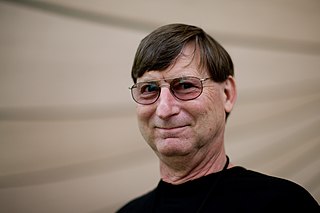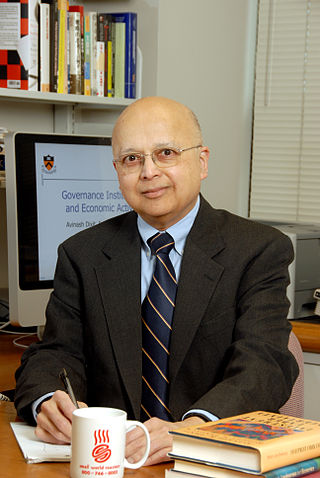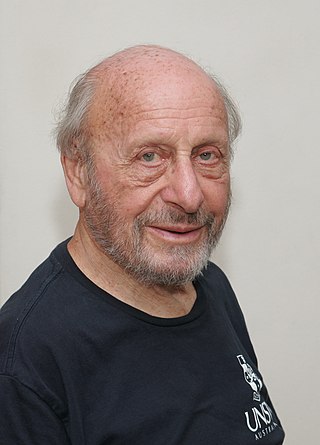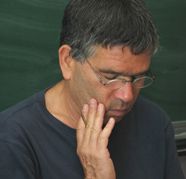
Microeconomics is a branch of mainstream economics that studies the behavior of individuals and firms in making decisions regarding the allocation of scarce resources and the interactions among these individuals and firms. Microeconomics focuses on the study of individual markets, sectors, or industries as opposed to the national economy as whole, which is studied in macroeconomics.

Vernon Lomax Smith is an American economist and professor of business economics and law at Chapman University. He was formerly a professor of economics at the University of Arizona, professor of economics and law at George Mason University, and a board member of the Mercatus Center. Along with Daniel Kahneman, Smith shared the 2002 Nobel Memorial Prize in Economic Sciences for his contributions to behavioral economics and his work in the field of experimental economics. He worked to establish 'laboratory experiments as a tool in empirical economic analysis, especially in the study of alternative market mechanisms'.

The Stockholm School is a school of economic thought. It refers to a loosely organized group of Swedish economists that worked together, in Stockholm, Sweden primarily in the 1930s.

In microeconomics, the contract curve or Pareto set is the set of points representing final allocations of two goods between two people that could occur as a result of mutually beneficial trading between those people given their initial allocations of the goods. All the points on this locus are Pareto efficient allocations, meaning that from any one of these points there is no reallocation that could make one of the people more satisfied with his or her allocation without making the other person less satisfied. The contract curve is the subset of the Pareto efficient points that could be reached by trading from the people's initial holdings of the two goods. It is drawn in the Edgeworth box diagram shown here, in which each person's allocation is measured vertically for one good and horizontally for the other good from that person's origin ; one person's origin is the lower left corner of the Edgeworth box, and the other person's origin is the upper right corner of the box. The people's initial endowments are represented by a point in the diagram; the two people will trade goods with each other until no further mutually beneficial trades are possible. The set of points that it is conceptually possible for them to stop at are the points on the contract curve.
In welfare economics, a social planner is a hypothetical decision-maker who attempts to maximize some notion of social welfare. The planner is a fictional entity who chooses allocations for every agent in the economy—for example, levels of consumption and leisure—that maximize a social welfare function subject to certain constraints. This so-called planner's problem is a mathematical constrained optimization problem. Solving the planner's problem for all possible Pareto weights yields all Pareto efficient allocations.
In economics, a consumer's indirect utility function gives the consumer's maximal attainable utility when faced with a vector of goods prices and an amount of income . It reflects both the consumer's preferences and market conditions.
David Marc "Dave" Kreps is a game theorist and economist and professor at the Graduate School of Business at Stanford University. The Stanford University Department of Economics appointed Kreps the Adams Distinguished Professor of Management. He is known for his analysis of dynamic choice models and non-cooperative game theory, particularly the idea of sequential equilibrium, which he developed with Stanford Business School colleague Robert B. Wilson.

Hal Ronald Varian is Chief Economist at Google and holds the title of emeritus professor at the University of California, Berkeley where he was founding dean of the School of Information. Varian is an economist specializing in microeconomics and information economics.

Avinash Kamalakar Dixit is an Indian-American economist. He is the John J. F. Sherrerd '52 University Professor of Economics Emeritus at Princeton University, and has been Distinguished Adjunct Professor of Economics at Lingnan University, senior research fellow at Nuffield College, Oxford and Sanjaya Lall Senior Visiting Research Fellow at Green Templeton College, Oxford.
David Ernest William Laidler is an English/Canadian economist who has been one of the foremost scholars of monetarism. He published major economics journal articles on the topic in the late 1960s and early 1970s. His book, The Demand for Money, was published in four editions from 1969 through 1993, initially setting forth the stability of the relationship between income and the demand for money and later taking into consideration the effects of legal, technological, and institutional changes on the demand for money. The book has been translated into French, Spanish, Italian, Japanese, and Chinese.
Economics education or economic education is a field within economics that focuses on two main themes:

Geoffrey Colin Harcourt was an Australian academic economist and leading member of the post-Keynesian school. He studied at the University of Melbourne and then at King's College, Cambridge.

Motty Perry ; born October 2, 1949) is an Israeli professor of economics at the University of Warwick, England and the emeritus Don Patinkin Professor of Economics at the Hebrew University of Jerusalem, Israel.

Andreu Mas-Colell is an economist, an expert in microeconomics and a prominent mathematical economist. He is the founder of the Barcelona Graduate School of Economics and a professor in the department of economics at Pompeu Fabra University in Barcelona, Catalonia, Spain. He has also served several times in the cabinet of the Catalan government. Summarizing his and others' research in general equilibrium theory, his monograph gave a thorough exposition of research using differential topology. His textbook on microeconomics, co-authored with Michael Whinston and Jerry Green, is the most used graduate microeconomics textbook in the world.
Victoria Chick was a Post Keynesian economist known for her essays on monetary theory, banking and methodology. Her writing on Keynes's General Theory made her one of the foremost interpreters of his work. After the 2008 banking crisis she coined a corollary to Gresham's Law, arguing that in orthodox economics "bad theory drives out good."
Philip J. Reny is the Hugo F. Sonnenschein Distinguished Service Professor in Economics and in the college at the University of Chicago. Reny is known as an economic theorist and perhaps is best known for the textbook Advanced microeconomic theory written jointly with Geoffrey A. Jehle. He is a member of The American Academy of Arts and Sciences, and was the Head Editor of Journal of Political Economy. In 1996, Reny became a fellow of the Econometric Society. He has also been a charter member of the Game Theory Society since 1999, and a fellow of the Society for the Advancement of Economic Theory starting in 2012.
Professor Hugh Stanley Emrys Gravelle studied at the University of Leeds, where he graduated in BComm. He joined the staff at Queen Mary College, University of London, lecturing in theories and applied microeconomics. He then moved to The University of York, Centre for Health Economics in January 1998 to present.
Christopher Mark Snyder is an American economist and the Joel Z. and Susan Hyatt Professor of Economics at Dartmouth College. He is the co-author of two textbooks, Microeconomic Theory: Basic Principles and Extensions and Intermediate Microeconomics and its Application.
Beth Elaine Allen is a professor of Economics at the University of Minnesota and has served as the Curtis L. Carlson Chair in that department. At the University of Minnesota, she teaches Advanced Game Theory and Advanced Topics in Economics. She graduated with a PhD from the University of California, Berkeley in 1978. She specializes in competition, economic theory, economic trends, economics of information and uncertainty, game theory, microeconomic theory, microeconomics, and price-setting. She is a Fellow of the Econometric Society and the Society for the Advancement of Economic Theory, and was one of very few women to have received tenure in a theoretical field of economics in a top university department by 1993. Her research focuses on the economics of information and uncertainty.

Philip Nathan Jefferson is an American economist who has served as a member of the Federal Reserve Board of Governors since 2022. He was nominated for the position by President Joe Biden in January 2022, and was confirmed by the Senate in May 2022. Upon taking office, he became the fourth Black man to serve on the board.









